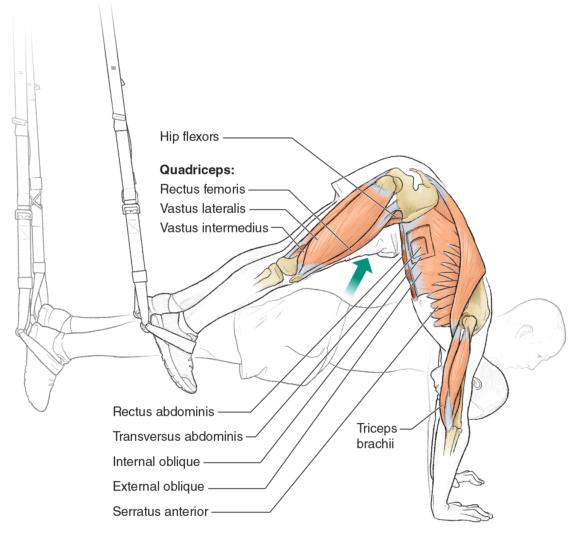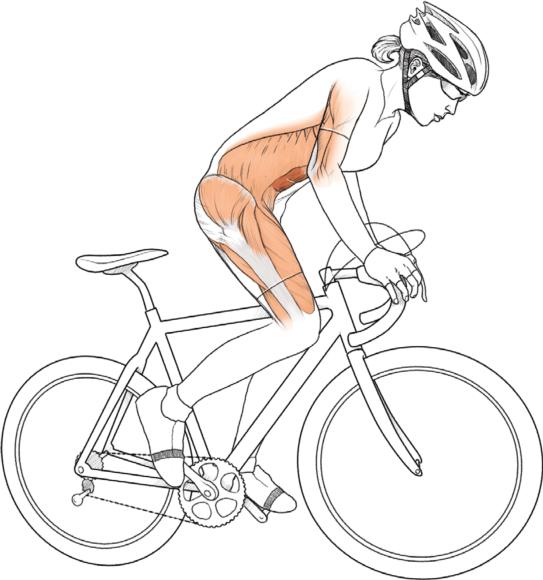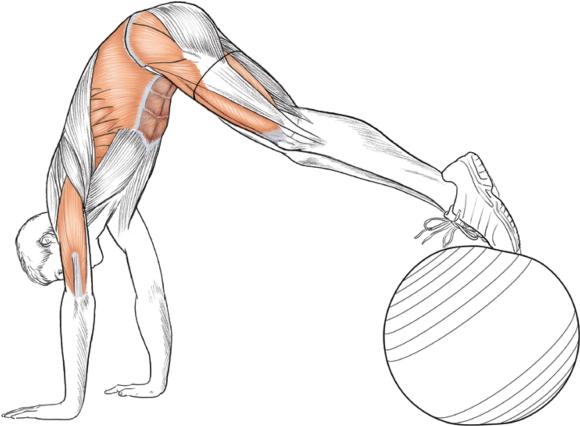Suspension pike exercise
This is an excerpt from Cycling Anatomy-2nd Edition by Shannon Sovndal.

Execution
- Get into a push-up position with your feet in the suspension strap handles.
- Lift your hips upward into a pike position. Your feet will move toward your hands, which are planted on the floor.
- Keep your back and legs straight during the entire exercise.
- Return to the starting position.
Muscles Involved
Primary: Rectus abdominis
Secondary: External oblique, internal oblique, transversus abdominis, serratus anterior, sartorius, iliopsoas, hip flexors, tensor fasciae latae, pectineus, adductor brevis, adductor longus, quadriceps (rectus femoris, vastus lateralis, vastus medialis, vastus intermedius), triceps brachii, latissimus dorsi, teres major, posterior deltoid
Cycling Focus
This exercise is terrific for cyclists. It works core stability as well as the abdominal muscles, quadriceps, arms, and shoulders. Because the straps can freely move, you will be forced to use all your secondary stabilizing muscles to maintain good form. These are the same muscles that will help you with your riding form when you become fatigued. When riding, your key foundation points will be your arms on the handlebars and your feet on the pedals. This exercise trains the same muscles. You'll be amazed at how tough this exercise is and definitely will notice improvement once you hit the road. Focus on controlled inhalation and exhalation throughout the entire range of motion. When riding your bike, you must continue controlled breathing even during tough efforts. Without the delivery of new oxygen to the muscles—and the removal of carbon dioxide from the muscles—you'll soon lose power and the ability to rotate the cranks.

Variation
Stability Ball Pike
Perform the same exercise, but instead of using the suspension straps, place your feet on top of a stability ball. This is a great alternative if you don't have access to suspension straps. The ball offers similar instability, which is a key component of this exercise.



Get the latest insights with regular newsletters, plus periodic product information and special insider offers.
JOIN NOW


